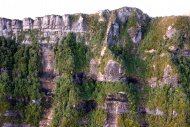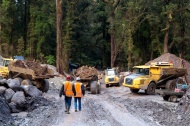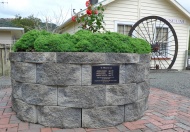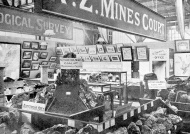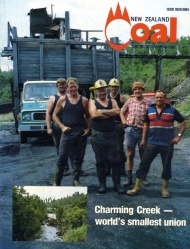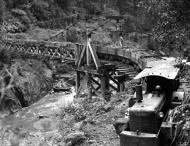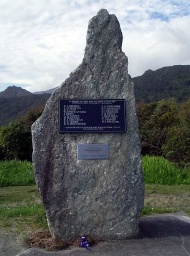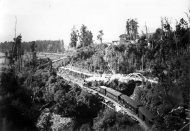Events In History
-
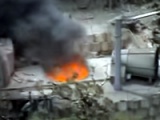 19 November 2010Pike River mine explosion kills 29
19 November 2010Pike River mine explosion kills 29The mine exploded at 3.45 p.m. on Friday 19 November 2010. Twenty-nine of the 31 men underground died immediately or shortly afterwards from the blast or because of the toxic atmosphere this generated. Read more...
-
 19 January 196719 killed in Strongman Mine explosion at Rūnanga
19 January 196719 killed in Strongman Mine explosion at RūnangaNineteen men were killed when an explosion ripped through the Strongman coal mine at Rūnanga. An inquiry found that safety regulations had not been followed and a shot hole for a charge had been incorrectly fired. Read more...
-
 12 September 1914Forty-three miners killed in explosion at Huntly
12 September 1914Forty-three miners killed in explosion at HuntlyAt 7.20 a.m. an explosion at Ralph's mine on Raynor Rd rocked Huntly. It was caused by a miner's naked acetylene cap-lamp igniting firedamp (methane gas given off by coal) Read more...
Articles
Seddonville

The West Coast coalmining settlement of Seddonville, 50 kms north of Westport, was named in honour of the Liberal Premier Richard Seddon. It was also the site of an early experiment in state socialism – New Zealand's first state coal mine opened there in 1903.
-
Page 2 – Coal is discovered
After John Rochfort discovered fragments of bituminous coal in a river north of Westport in 1859, the search was on for accessible coal seams that could be mined.
-
Page 3 – Seddonville State Mine
Premier Richard Seddon decided that the best way to challenge the coal companies was to establish government-owned mines that would provide cheaper coal as well as setting
-
Page 4 – Mining at Charming Creek
The block of coal discovered in the headwaters of Charming Creek created interest after the closure of the state mine.
-
Page 5 – Hydraulic coal mining
There are major advantages to using hydraulic mining for coal, including the lack of dust as well as minimising the risk of explosions and fires.
-
Page 6 – Decline of mining
After 1956 there was a sharp decline in the demand for coal as many customers changed to oil.
-
Page 7 – Seddonville's rail heritage
The Ngakawau-Seddonville branch line was built solely for the transport of coal from mines near Seddonville to Westport harbour, where it was then transported around New
-
Page 8 – Further information
This web feature was written by Simon Nathan and produced by the NZHistory.net.nz team.
Pike River mine disaster

On the afternoon of 19 November 2010, an explosion ripped through the remote Pike River mine on the West Coast of the South Island, killing 29 men.
- Page 1 - Pike River mine disasterOn the afternoon of 19 November 2010, an explosion ripped through the remote Pike River mine on the West Coast of the South Island, killing 29 men.
Conscientious objection

There are always supporters and opponents of a country fighting a war. Over 2500 conscientious objectors lost their civil rights in New Zealand for refusing to serve in the First World War.
- Page 3 - Socialist objectionMany socialist and labour leaders criticised the First World War as an imperialist war and strongly opposed conscription. New Zealand workers, they argued, had no quarrel with
The 1913 Great Strike

The Great Strike of 1913 was in fact a series of strikes between mid-October 1913 and mid-January 1914. It was one of New Zealand’s most violent and disruptive industrial confrontations.
-
Page 6 – The 1913 strike in the South Island
Although the 1913 strike had its biggest impact on Auckland and Wellington, the South Island's cities and mining towns were also affected.
1947 Greymouth beer boycott

What would it take for West Coasters to boycott their beloved beer? Greymouth hotel-keepers found out in 1947, when an organised attempt to raise the price of beer sparked one of the most effective consumer boycotts ever seen in New Zealand.
- Page 4 - Industrial actionAfter the first week of the Greymouth beer boycott it became clear that the Licensed Victuallers' Association (LVA), supported by the breweries, was not going to yield.
Related keywords
- west coast
- disasters
- roading
- maps
- memorials
- hikurangi
- dave dobbyn
- music
- mining
- runanga
- 1913 strike
- trade unions
- huntly
- denniston
- protest
- workers rights
- taupiri
- dunedin
- greymouth
- buller
- brunner
- blackball
- lyttelton
- demonstrations
- nightcaps
- northland
- wellington city
- shipping
- red feds
- strikes
- historic places
- seddonville
- thomas brunner
- roadside stories
- alcohol
- drink
- richard seddon
- mokihinui
- railways
- trains
- strongman mine disaster
- exhibitions
- WW1
- irish
- conscientious objection
- pacifism
- socialism
- paddy webb
- labour party
- conscription
- peter fraser
- tom moynihan
- westport
- bridges
- horses
- transport
-
Main image: Flowers near Pike River mine portal
Flowers left near the portal to the Pike River mine





